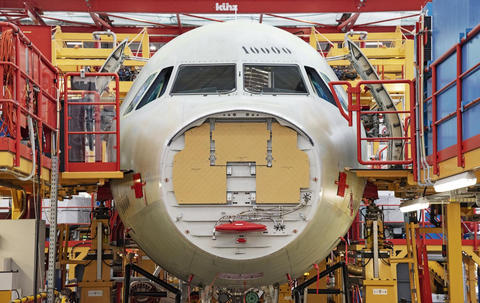The evolution of aircraft manufacturing techniques has witnessed a remarkable shift from traditional methods to advanced, cutting-edge processes. The industry’s quest for efficiency, precision, and performance has led to the adoption of innovative manufacturing methodologies that redefine the way aircraft are built, setting new standards in quality, cost-effectiveness, and sustainability.
Traditional aircraft manufacturing techniques, rooted in conventional processes, have long been the foundation of aircraft production. These methods typically involve manual labor, assembly line manufacturing, and the use of conventional materials such as aluminum and titanium. Skilled workers meticulously fabricate and assemble components, relying on established techniques honed over decades of aviation history.
One of the hallmarks of traditional manufacturing is riveting—joining structural elements using rivets. Riveting requires skilled labor and involves time-consuming processes to attach panels and components. While proven effective, riveting can introduce structural weaknesses due to stress concentrations around rivet holes and can be labor-intensive.
Sheet metal fabrication has been a cornerstone of traditional manufacturing, involving the shaping, cutting, and bending of metal sheets to form aircraft components. This method, though reliable, is limited in its design flexibility and may add weight to the aircraft due to the nature of metal-based structures.
Advanced manufacturing techniques represent a paradigm shift in aircraft production, leveraging automation, robotics, additive manufacturing, and advanced materials to streamline processes and enhance efficiency. Additive manufacturing, or 3D printing, allows for the production of complex components with reduced weight and material waste, offering unprecedented design freedom.
Composite materials, such as carbon fiber reinforced polymers (CFRP) and advanced thermoplastics, have revolutionized aircraft manufacturing. These materials, with their superior strength-to-weight ratios, enable the creation of lightweight, durable components. Advanced composite manufacturing involves intricate layup processes, resin infusion, and autoclave curing to create high-performance structures.
Automated assembly lines equipped with robotics and computer-aided systems have transformed the manufacturing landscape. Robotic arms precisely perform tasks such as drilling, fastening, and painting, ensuring accuracy and consistency while reducing human error. Automated manufacturing significantly accelerates production rates and enhances quality control in aircraft manufacturing.
One of the notable advancements in manufacturing is the use of unmanned aerial vehicles (UAVs) or drones in assembly and inspection processes. UAVs equipped with cameras and sensors navigate through the manufacturing environment, conducting inspections and assessments in areas that are difficult to access, enhancing safety and efficiency.
Digital manufacturing technologies, including virtual reality (VR) and augmented reality (AR), enable engineers and workers to visualize and simulate assembly processes. VR and AR applications provide immersive experiences for training, assembly guidance, and quality control, facilitating error reduction and enhancing worker efficiency.
The adoption of advanced manufacturing techniques not only improves efficiency but also contributes to environmental sustainability. Additive manufacturing reduces material waste, while the use of lightweight composites decreases fuel consumption, thereby reducing the carbon footprint of aircraft throughout their operational lifespan.
Challenges exist in the widespread adoption of advanced manufacturing techniques, including high initial investment costs, the need for specialized training, and certification requirements for new materials and processes. However, the long-term benefits in terms of efficiency, performance, and sustainability outweigh these initial hurdles.
The future of aircraft manufacturing lies in the continued integration of advanced technologies. Further advancements in materials science, robotics, artificial intelligence, and data analytics will drive continuous innovation, enhancing manufacturing processes and shaping the next generation of aircraft with unprecedented efficiency and performance.
Collaboration between industry stakeholders, research institutions, and regulatory bodies remains pivotal in advancing and standardizing these cutting-edge manufacturing techniques. This collaboration ensures that safety, quality, and regulatory compliance are maintained while fostering innovation in the aerospace industry.
As aircraft manufacturing continues to evolve, the integration of traditional craftsmanship with state-of-the-art technologies represents the synergy between heritage and innovation. The convergence of these methodologies propels the aviation industry forward, ensuring that future aircraft not only soar higher and faster but are also built smarter and more sustainably.
























